Richard Nixon had campaigned in the 1968 presidential election under the slogan that he would end the war in Vietnam and bring ‘peace with honor.’ However, there was no plan in place to do this, and the American commitment continued for another five years. The goal of the American military effort was to gradually build up the strength and confidence of the South Vietnamese armed forces by re-equipping it with modern weapons so that they could defend their nation on their own. This policy became the cornerstone of the so-called ‘Nixon Doctrine.’ As applied to Vietnam, it was labeled ‘Vietnamization.’
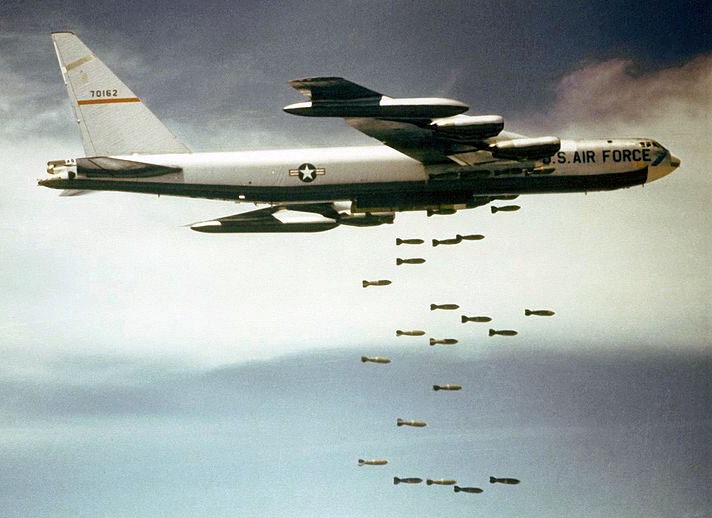
The Last American Losses Included the Tragedy at Mary Ann
With a renewed U.S. offensive bombing campaign forcing a recalcitrant North Vietnam back to the negotiating table, with resulting progress in the Paris peace negotiations, on January 15, 1973, Nixon announced the suspension of all offensive actions against North Vietnam. This would be followed by a unilateral withdrawal of all U.S. troops. Twelve days later, on January 27, the Paris Peace Accords on “Ending the War and Restoring Peace in Vietnam” were signed, officially ending direct U.S. involvement in the Vietnam War. The agreement included the provision that all U.S. combat units would leave Vietnam by March 29, 1973. As an inducement for President Thieu’s government to sign the agreement, Nixon had promised that the U.S. would provide financial and limited military support (in the form of airstrikes) so that the South would not be overrun. But Nixon was fighting for his political life in the growing Watergate scandal and facing an increasingly hostile Congress, which was withholding funding for the continuation of the war, and he was unable to back up his promise. Compounding the issue, many United States citizens had turned against the war, citing the length of time it had been going on, the high number of U.S. casualties, and U.S. involvement in such war crimes as the My Lai massacre.
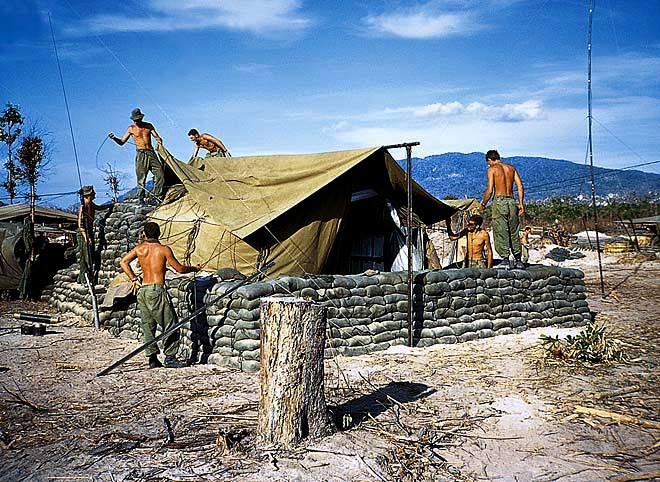
With just a little over a month to go, American combat troops stationed throughout South Vietnam were ecstatic over the prospects of going home as they turned over their installations and war materials to the South Vietnam military. But as they did so, the NVA and Vietcong continued to wage battle, resulting in 68 Americans killed in 1973. Thirty-three of those KIAs alone occurred in a single one-hour battle at Fire Support Base (FSB) Mary Ann.
The Battle of Mary Ann Shocked the American Public
However, before the agreement was signed and American troops began standing down, fighting the NVA and Vietcong raged on. One battle in particular caught the eye of Americans – the siege of FSB Mary Ann on March 28, 1971.
The firebase was strategically located to interdict the movement of enemy troops and materiel down the K-7 Corridor and the Dak Rose Trail (branches of the Ho Chi Minh trail running from Laos to the coast of South Vietnam). Originally intended to be a temporary base, it evolved into a more permanent location garrisoned by at least one company of U.S. ground forces. The base was manned by 231 American soldiers at the time of the attack. Also present on the base was a Republic of Vietnam (ARVN) artillery battery awaiting the turnover of the FSB to ARVN units.
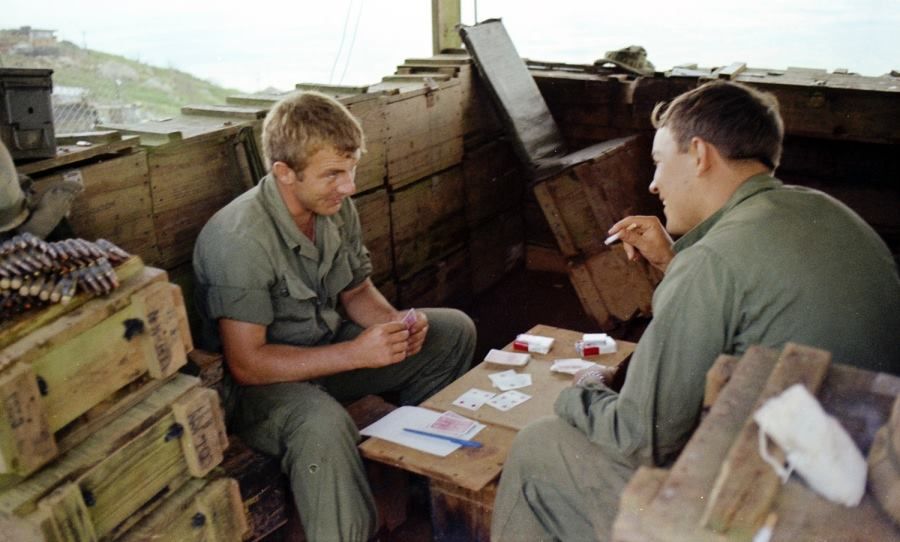
Mary Ann Became the Deadliest Firebase Attack of the War
FSB Mary Ann was similar to other U.S. firebases in South Vietnam, although it occupied a bulldozed hilltop which looked like a camel with two humps. Running northwest to southeast, the firebase stretched 500 meters across two hillsides with twenty-two bunkers. The headquarters consisted of the Tactical Operations Center (TOC) and Company Command Post (CP), and was located at the south end of the camp. The northwest end of the camp consisted of an artillery position with two 155mm howitzers, the fire direction center, and the artillery command post. Surrounding the firebase was a trench system protected by concertina wire.
For months leading up to the attack, the level of enemy activity in the area had been low and contacts were infrequent. The lack of significant recent engagements, along with preparations to turn the FSB over to ARVN units and their impending return home, had given the U.S. soldiers in the area a false sense of security.
But early on the fog-shrouded morning of March 28, 1973, an estimated 50 sappers from the 2nd Company, 409th NVA Main Force Sapper Battalion, working in small squads of three to six men, stealthily crawled through the jungle, using their fingertips as probes. When they detected trip flares, they used lengths of bamboo, carried in their teeth, to tie down the strikers. When they felt wires leading to Claymore mines, they used wire cutters to cut the lines. When they reached the concertina wire, they were careful to cut only two-thirds of the way through the strands, then used their fingers to silently break the rest of the way through the wire without shaking the large coils.
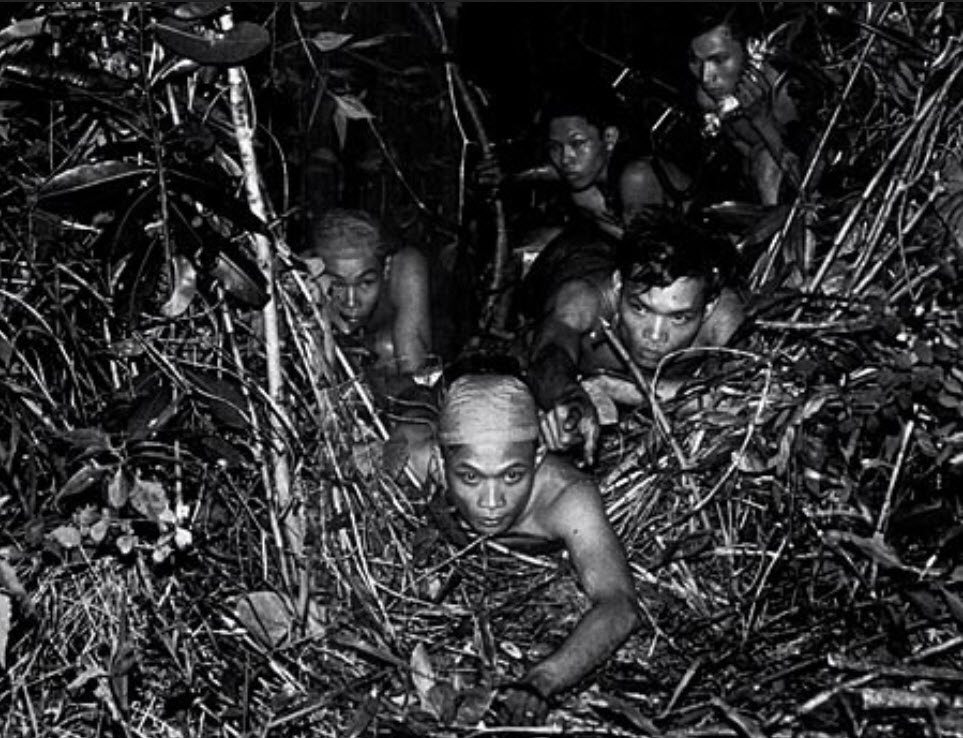
To make themselves less visible, and much more difficult targets in the darkness, their bodies were covered with charcoal and grease. Strapped to their backs were AK-47s or RPG-7s, with satchel charges strapped to their chests, and hand grenades hanging from their belts.
Crouching low, the sappers cut four paths through the base’s two outer concertina barriers. They took more time moving through the third barrier, which was about 20 meters from the bunker line and then fanned out along the southwest side of the line.

Following standard sapper doctrine, their attack would commence with the first mortar barrage. The first enemy 82mm mortar shells hit FSB Mary Ann at 2:30 AM, signaling the start of the ground attack. Their supporting mortars opened with accurate fire on the TOC and CP on the base’s southeast side, and on the remaining U.S. mortar and artillery positions in the northwest area. The NVA had achieved the element of surprise, as American soldiers were neither prepared nor on alert.
Once through the wire, the sappers scattered toward key targets: the Tactical Operations Center (TOC) bunker and the company command post, effectively disrupting the command structure on the firebase, plus the FSB’s artillery and many of the perimeter bunkers. Their attack was aided by tear gas, delivered either by sappers (using grenades) or mixed in with regular high-explosive mortar rounds as part of the bombardment.
At about the same time (2:51 AM), the TOC radio operator requested illumination rounds from supporting artillery batteries at LZ Mildred, but did not indicate that Mary Ann was under ground attack. A captain in the TOC grabbed the radio away from the radio operator and gave orders to begin firing artillery at various coordinates around the firebase. The response was delayed because one of the three responding firebases had failed to plot supporting fire coordinates.
The south end of the TOC was burning by this time, the fire started by a satchel charge igniting a case of white phosphorus grenades located near the south bunker entrance.

Amidst all the explosions, the NVA managed to penetrate the south side of the FSB’s perimeter. By the time the American soldiers inside the bunkers had recovered from the confusion, the sappers were already inside the camp, and hit half the bunkers using satchel charges and rocket-propelled grenades. The surprise attack by the NVA had the effect of immobilizing the camp’s defenders, but those who survived the initial onslaught managed to mount a resistance against their attackers.
At around 3:30 AM, the NVA disengaged and withdrew from the firebase, trying to drag their dead and wounded comrades back through the concertina wire, when a helicopter gunship finally appeared and began firing its guns at the retreating sappers.

The wounded survivors of the 1st Battalion were finally airlifted out on medevac helicopters.
The battle for FSB Mary Ann produced disastrous results for the U.S. Army, which suffered 33 killed and 83 wounded. It was the most deadly attack on a single U.S. firebase during the Vietnam War. The NVA casualties were largely unknown, but 15 bodies were left behind in the aftermath of the attack, and blood trails and drag marks indicated that the NVA may have suffered more casualties.
Maj. Gen. James L. Baldwin, commander of the 23rd (American) Infantry Division was removed from command and received a letter of admonishment as a result of the attack on Fire Support Base Mary Ann. The Commander of the 196th Light Infantry Brigade, Col. William Hathaway, was removed from the promotion list for Brig. Gen. and received a letter of reprimand. The commander of 1st Battalion 46th Infantry, Lt. Col. William P. Doyle, also received a letter of reprimand. Doyle remained in service until his retirement but did not receive another promotion. He died of acute alcoholism at age 54. All three commanders received these reprimands for not having ensured that standard operating procedures were followed with regard to perimeter security at FSB Mary Ann, thus facilitating the devastatingly deadly attack.
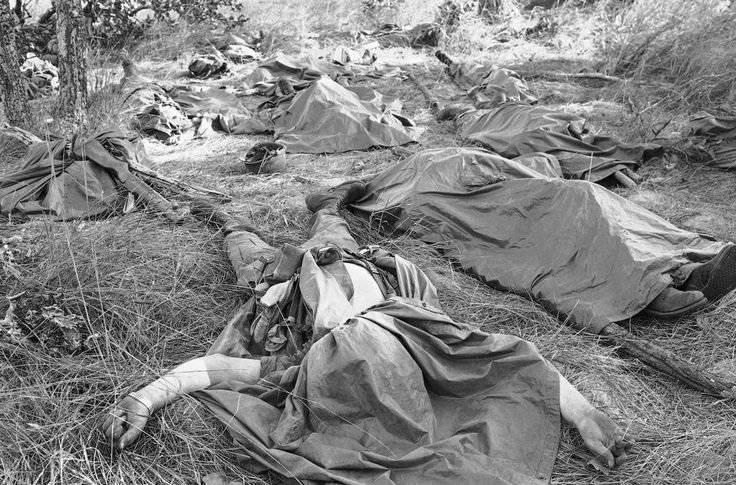
Baldwin, Hathaway, and Doyle protested their reprimands, but they were upheld by Gen. William Westmoreland, then the Army Chief of Staff. In fact, Westmoreland and his successor as Commander in Vietnam, Gen. Creighton Abrams, wanted Baldwin reduced in rank to Brig. Gen. and for him to receive a letter of reprimand. They were overruled by Secretary of the Army Robert Froehlke, and Baldwin received the less severe letter of admonishment and no reduction in rank. Doyle was himself nominated for a Silver Star for his heroics while suffering multiple fragmentation wounds during the desperate defense of FSB Mary Ann, but his commanding officer (Hathaway) refused to endorse the nomination, considering that Doyle was partially to blame for the sapper infiltration.
The Fallen of Mary Ann Left Lasting Scars on Families
On June 29, 1973, the 196th Brigade was the last combat brigade to leave Vietnam. In total, the brigade suffered 1,188 KIA, and 5,591 WIA in Vietnam.
Author’s Note: Among the 33 soldiers killed at FSB Mary Ann, two were from western Michigan. Their names were Michael Holloway and Warren Ritsema. I was the Survivor Assistance Officer (SAO) for Ritsema but not the Holloway family. Yet I did share a history with the Holloway family and decided to make a visit to the funeral home in hopes of reconnecting with any Holloway that might be there.
When I entered the funeral home and was ushered into the room where Michael’s body lay, I saw an older man I recognized as Maynard Holloway. As a little boy, I lived three doors down from Maynard and his wife, Ruth. Since he was in the Army during World War II, he was not around much, but I recalled his return home after the war, and the many times I saw him afterward. For whatever reason, Maynard and Ruth ultimately divorced, and while Ruth remained a family friend, I never saw Maynard again.
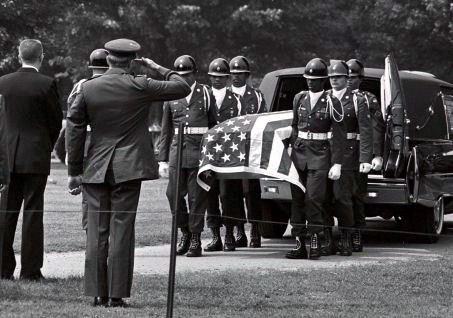
When Maynard first saw me, I was wearing my class-A uniform as I had just come from work (I was a National Guard advisor while finishing up college). When he saw the uniform, a spark of anger came into his eyes. But that quickly disappeared when I told him who I was and that I was only there to offer my condolences. I realized he was reflecting the pain any American who lost a loved one would feel at a time when the vast majority of Americans felt the war had gone on too long, and for families like his that had to suffer the loss of a loved one.
I didn’t even try to comfort him. He was in no mood for words like ‘honorable service,’ ‘the ultimate sacrifice,’ ‘For God and Country’ or any of the words I normally said at a gravesite during my SAO duties. I just let him know how sorry I was for his loss. We shook hands and I left.
Warren Peter Ritsema, the other Western Michigan man killed at FSB Mary Ann, was assigned to me as the family’s SAO. He left a young, beautiful widow named Marcia. She and Warren and his family were devout Christians. For the rest of the time I remained in Grand Rapids, I would check in with the family to see if they needed any additional help.
I was struck by one thing that I have never forgotten. At Warren’s funeral service, Simon and Garfunkel’s ‘Bridge over Troubled Waters’ was played. As I listened to the words, I understood why it was selected.
I cannot help thinking of Warren, Marcia, and his family anytime I hear that music.
Read About Other Battlefield Chronicles
If you enjoyed learning about the Fire Base Mary Ann, we invite you to read about other battlefield chronicles on our blog. You will also find military book reviews, veterans’ service reflections, famous military units and more on the TogetherWeServed.com blog. If you are a veteran, find your military buddies, view historic boot camp photos, build a printable military service plaque, and more on TogetherWeServed.com today.
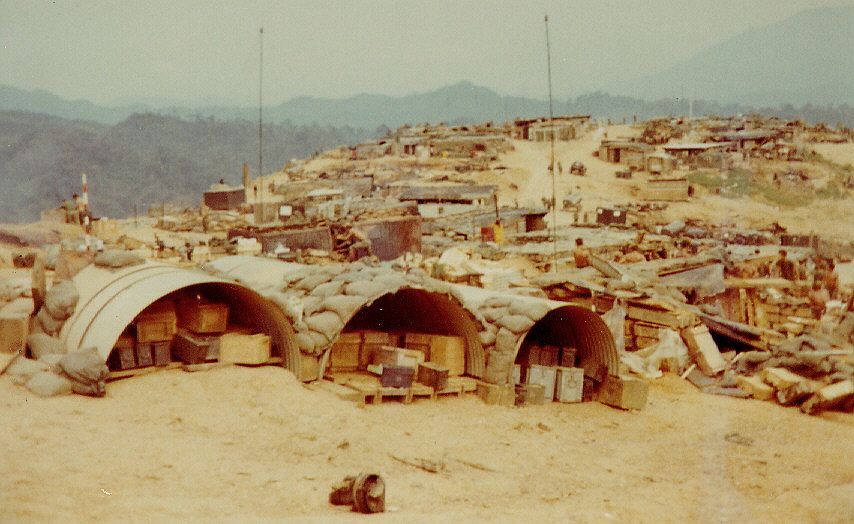
When I was in the Army, I knew a Sergeant Dennis Murphy from Brooklyn that was wounded at FB Mary Ann. Good man!!
I was in B 1/46. Kyle Hamilton was our platoon medic. Tom Kennedy was our platoon Sgt. I knew both of ,them well. Each one knew he was going to die soon. The sniper didn’t fire one well-aimed shot, and Sgt. Kennedy wasn’t dead when he hit the ground, as was reported in Sappers in the wire. The sniper fired 50 or 60 rounds from the ridge line as we were walking up a creek valley. I found the sniper nest. He had a Russian RPD machine gun. Sgt. Kennedy died in surgery 4 hours later. I prayed for him until we heard over the radio that he had died. This was about a week before Mary Ann was overran. On my first day on Mary Ann, 6 months earlier, the 2nd. in command, a major, told me “We’re pretty tight here on Mary Ann. Personally, I’d like to see Charlie try to take this hill.” When B Co. was on Mary Ann, our guards we’re ALWAYS alert.. I find it very hard to believe that C Co. wasn’t that night.–Kenneth Dwight Milgrim 870 869 3201
November 1971 I was assigned to the101st on Fire Base Bastogne as a Combat Engineer. Don’t know the exact distance between the two but Bastogne was close to Mary Ann in the A Shau Valley. Confirmed – Bastogne did direct artillery fire support May 29th, don’t how effective they were? I learned of Mary Ann’s disaster very early on and have never forgotten the stories. The 196th Infantry took responsibility for Bastogne, and the101st moved out. I was reassigned to the196th for remainder of my tour in 1972 and stayed on FB Bastogne as 196th Combat Engineer.
During my tour we only received random daylight sniper fire, a few mortar attacks that were followed up by light-harassment from NVA ground forces. The wire and trenches were never breached. After 196th pulled-out ARVN force took responsibility and where overrun soon after. I believe the NVA were testing our 196th effectiveness early in 1972 and planned ARVN attack on US procedures.
I served with 723rd maint bn 23inf div. I left the hill the day before the attack. The night before we had a taste of what was to come next.
Maryanne was overrun Mar 71. The 3/21 Gimlets, 196th Brigade came home Aug72.
My first or second night at Linda was on LP I was green , I think they were breaking me in with mortors , looked over at the rto he was fine, but I didn’t know much about Marian except it was abandoned and Linda was only one operating in Feb 72 next to Charlie ridge next day Westmorland flew in and got to shake his hand before they shipped me back to A company 3/21 to join my first inf unit> I tried looking up my old LT Goodal from Lake Oswego Oregon never could with D co 3/21 was in A C and D co last extraction replaced by arvin , cleaned our rifles and flew to Tansa nuit or how ya say, they were b52 hitting around An LOc or Daisy Cutters and such we flew home next day after pee test, had an arvin from church he got out and was at an loc at that time, he was lucky to get out
Rocco was our Col a Good Man
I was on Mary Ann, arriving back from a month on fire base young,which was an arvn base that echo co. had operated from with an arvn ranger group. Recon went on a few days stand down while i finished packing our gear on young. we all got to Mary Ann on the 27th of march and were assigned to bunker nine. If we weren’t in the bush off Mary Ann, and two companies were at Mildred with Lt. Tom Schmitz,that would mean almost no one was operating off Mary Ann, which would have allowed the N.V.A. to build up around Mary Ann. Sgt Victor W.J. Bobbitt Echo Recon.
There was no siege at Mary Ann. It was over in two hours and no repeat attacks. Many more were killed at FSB Ripcord in July 1970. Mary Ann was not in the Au Shau Valley. It was directly south of Da Nang and directly west of Chu Lai. Many myths exist about what took place. Keith Nolan did a good job with his description in Sappers in the Wire.
At the time of the attack Co. C was on the perimeter duty at Mary Ann. Co B and Co D were in the bush. Co A was at LZ Mildred. After the attack Co. D moved to Mary Ann to help secure the base. Co. C was down to a handful of duty-ready soldiers. The intent was to move 1/46 TOC from Mary Ann to MIldred at 0800 on March 28. The attack happened only hours before this move. As a result the move to Mildred was withdrawn and Mary Ann was kept in place for several more weeks. The schedule called for 1/46 to leave the Mary Ann AO and move north an take an AO in the area west of Da Nang. This was to replace the 1st Marine Division which was going home.
So many years have passed since March 28th. I was assigned to the 178 ASHC CH-47 Chinooks (Box Cars) in Chu Lai. My ship ferried a group of guys for rotation from Chu Lai to Mary Ann a day or two before Mary Ann was over run. Of course our crews heard about what happened the next day. One of our aircraft was assigned to pick up our dead. The next day,or the day after that my aircraft was assigned to return to Mary Ann for resupply.
We tend to remember events not so much dates, but what I do remember was Mary Ann was one huge mess. Our unit visited many LZ’s in our area of operations. When we returned for our resupply run, I was horrified by the sight of huge black holes where bunkers once stood. We landed on the helo pad (think it was on the north side). I was on the left M-60 and watched our rotor wash whip the American flag into a frenzy. Then I noticed one of our brave GI’s running like the devil himself was chasing him. Almost at the same moment I heard our co-pilot say”I got it” and immediately we did a super short forward roll with one of the most hard vertical takeoffs I’ve ever experienced. We made a hard climb with a left turn. Being on the left gun, I looked back at the helicopter pad and saw a huge dark gray column of smoke on the pad. From what I understand, SOMEONE radioed we were being targeted by a RPG.
Wasn’t our time.
I also was a Gunner, Crew Chief, / Flight Engineer with the “Boxcars” ( from Dec. ’70 to Dec.’71) and our ship (Kathy’s Clown, “A” Model 118) was scheduled to resupply LZ MaryAnn the morning after the attack. We didn’t hear about the attack until on our way to it. I remember Steve Wolak being in the Flight Platoon!
I also was a Gunner, Crew Chief, / Flight Engineer with the “Boxcars” ( from Dec. ’70 to Dec.’71) and our ship (Kathy’s Clown, “A” Model 118) was scheduled to resupply LZ MaryAnn the morning after the attack. We didn’t hear about the attack until on our way to it. I remember Steve Wolak being in the Flight Platoon! If any one remembers me, my phone is (717-957-2601)
My brother was supporting this base the night of this attack. He made it through unharmed. He carried this night the rest of his life. He was issued the bronze star for the actions of the night. RIP Steven Johnson. Your duty is now done. He was MIA for a while after this event. My parents received that letter then it was his letter home saying he was ok.